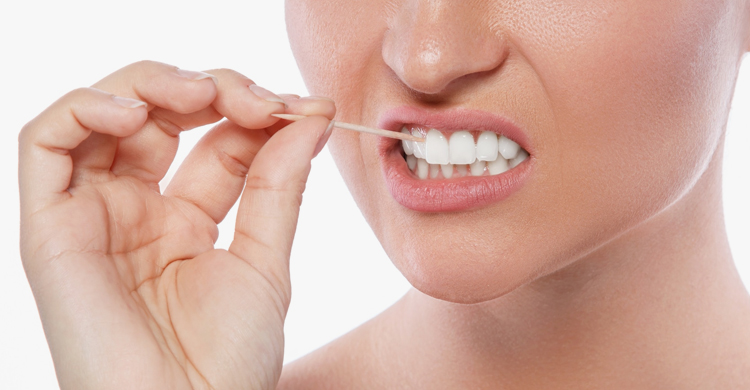
We’ve all experienced it: you’re enjoying a great meal when suddenly, a stubborn piece of food wedges itself between your teeth. You shift in your seat, trying to discreetly dig it out with your tongue or fingernail—annoying, right?
But if this keeps happening, it might be more than just a minor mealtime mishap. Frequent food impaction can be your mouth’s way of signaling a deeper dental issue.
In this post, we’ll explore five common reasons why food gets stuck between your teeth—and why it’s worth paying attention before a small nuisance becomes a big problem.
1. Gum Disease (Periodontal Disease)
Gum disease is a leading cause of recurring food traps. In its early stage (gingivitis), symptoms are subtle—slight redness or swelling. But if left untreated, it can progress to periodontitis, where the gums begin to pull away from the teeth, creating deep pockets.
These pockets act like tiny caves, catching food and allowing bacteria to thrive. Over time, this can lead to bad breath, gum recession, and even tooth loss. The tricky part? It often advances silently, without pain.
2. Tooth Decay and Cavities
Tooth decay isn’t always visible, especially when it occurs between the molars. Cavities form when bacteria wear down the enamel, creating pits and grooves where food can easily become lodged.
Once food is stuck in these spots, it fosters more bacterial growth—leading to even more decay. Left unchecked, this can result in infections, fillings, or even root canals.
3. Misaligned or Crowded Teeth
Teeth that are crooked, overlapping, or too close together create tight spaces that are difficult to clean—even with floss. These nooks and crannies are natural traps for food particles.
Misalignment also affects your bite, causing uneven pressure on certain teeth. Over time, this uneven wear can make it even easier for food to get stuck.
4. Worn or Faulty Dental Work
If you’ve had dental fillings, crowns, or bridges, they may shift or deteriorate over time. When this happens, small gaps can form between the restoration and your natural tooth, becoming perfect hiding places for food.
Poorly shaped fillings or worn dental work can not only trap debris but also damage nearby teeth and irritate your gums.
5. Enamel Erosion
Your enamel is your teeth’s first line of defense—hard, smooth, and protective. But acidic foods and drinks, harsh brushing, or acid reflux can gradually wear it down.
Eroded enamel doesn’t always cause cavities, but it does create a rougher surface where food particles easily stick—especially soft, stringy, or sticky foods.
Final Thoughts
If you’re constantly fishing food out from between your teeth, don’t just chalk it up to bad luck. It could be your mouth’s way of telling you something isn’t right.
Scheduling a dental checkup can help pinpoint the cause—and prevent a minor issue from turning into something more serious. Your smile (and your sanity) will thank you.





